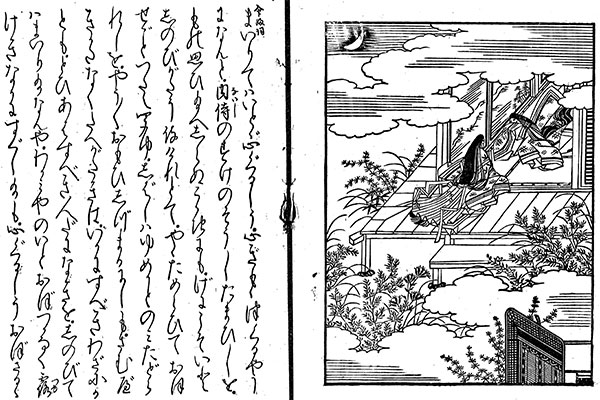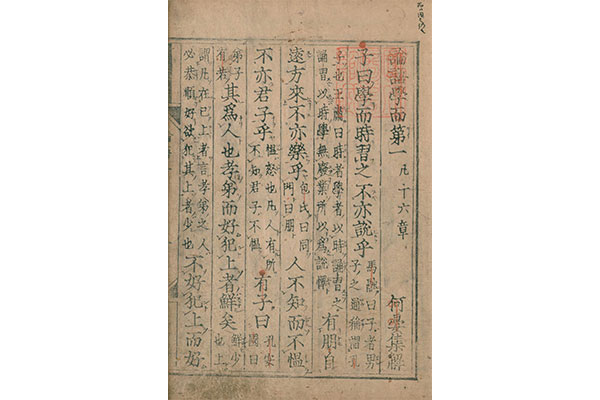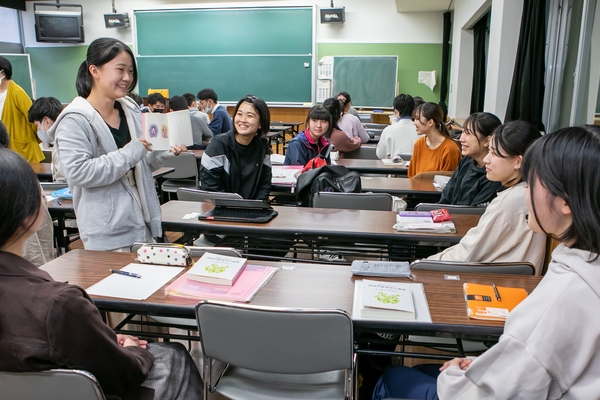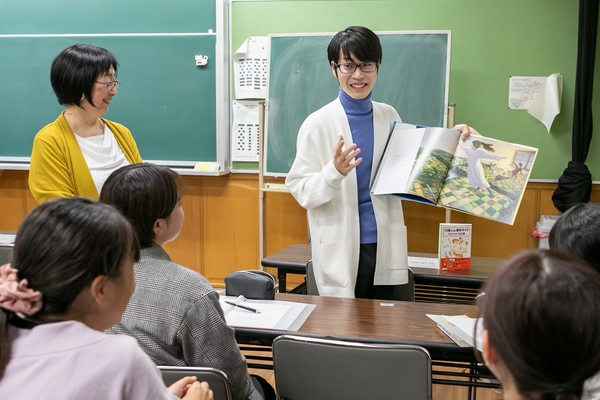●Lecture on Japanese Linguistics
●Lecture on Modern Japanese Literature
●Lecture on Classical Chinese Studies
●Research on Japanese Language Education
●Linguistics Seminar
●Classical Literature Seminar
●Modern Literature Seminar
●Chinese Classical Literature Seminar
Japanese
To become a teacher who explores the Japanese language in depth and conveys its fascinating aspects
To create interesting and easily understandable lessons, teachers require two essential elements. One is teaching ability, and the other is knowledge of the subject matter. The area of learning how to design lessons is called “subject education,” and the domain of knowledge related to the content is called “subject specialization.” Without a well-balanced combination of these two, effective teaching is not possible. It’s like a car: without two pairs of good wheels, it cannot drive straight. In this course, “Japanese Language Education” is provided as subject education, while as subject specialization, we offer “Japanese Language Studies,” “Classical Literature,” “Modern Literature,” and “Chinese Literature.” Experts in each field lead the classes. Through subject specialization courses, you will acquire deep knowledge and a good perspective of Japanese culture. In the Japanese language education classes, you will learn how to apply this knowledge to create effective lessons. Our goal is to nurture teachers who can continue to contribute for 40 years after graduation, so we are dedicated to working with students in their education.
-
 Picture-inserted The Tale of Genji: The Kiritsubo Chapter
Picture-inserted The Tale of Genji: The Kiritsubo Chapter
-
 The Analects of Confucius: Chapter on Learning
The Analects of Confucius: Chapter on Learning
Characteristics of Major
The classes have distinctive features. In Japanese linguistics, students delve deep into the pronunciation and grammatical structure of the Japanese language, as well as its history and dialects. In classical literature, they study literary works from the Heian to Edo periods, such as The Tale of Genji and Ihara Saikaku’s works. Modern literature involves the interpretation of contemporary and modern literary works, including those by Yukio Mishima and Haruki Murakami, thus developing fundamental skills in literary research. Chinese literature covers various genres, including poems by Li Bai and Bai Juyi, philosophical works like The Analects, historical records like Records of the Grand Historian, and supernatural novels such as “Nin-tora-den” (the original story of “Sangetsuki”). This exposure aims to build a foundational understanding of Chinese literature. Additionally, in Japanese language education, students extend their awareness of Japanese language education from junior and senior high schools by learning from exemplary practices and studying teaching materials. This process contributes to the development of the qualities and capabilities required for teaching as a profession.
Curriculum Features
128 credits (approximately 60 courses) will be completed over four years. When taking the offered courses in sequence from the first to the fourth year, subjects such as Linguistics, Japanese Literature, and Classical Chinese Literature progress from fundamental to specialized content. The curriculum for Japanese Language Education is designed to develop the capabilities required of a Japanese language teacher. Classes consist of both lecture-style explanations by instructors and exercises where students research and present. Special emphasis is placed on exercises to enhance students’ research and presentation abilities. In addition to these, practical experiences are provided through internships from the first to the fourth year to cultivate hands-on abilities.
-
Main Subjects of Study
-
Obtainable Teaching Licenses and Qualifications
●Junior High School Teaching License (Japanese Language)
●High School Teaching License (Japanese Language)




